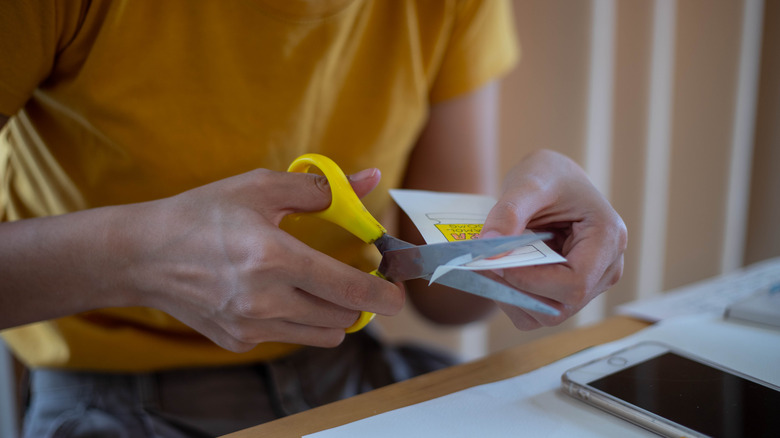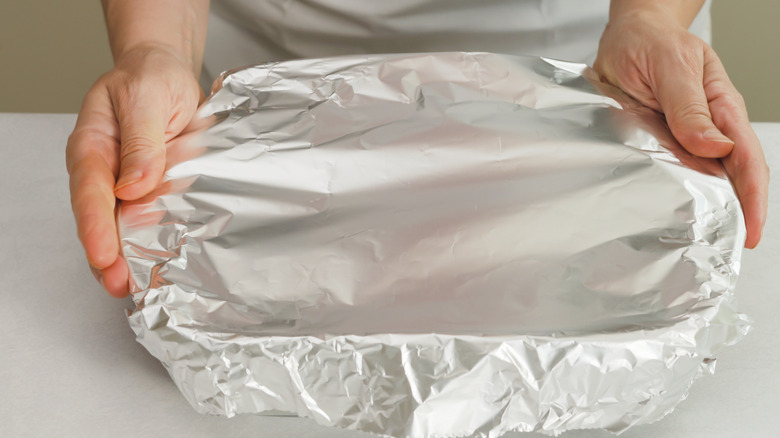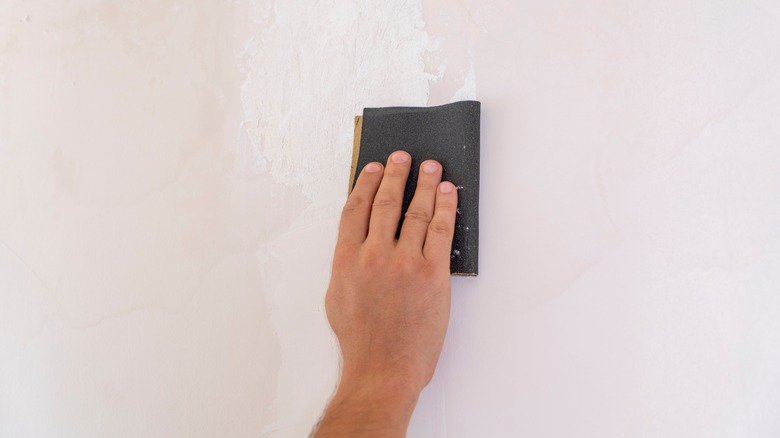The Secret To Sharpening A Dull Pair Of Scissors Is Already In Your Kitchen
A lot of things in our pantries have double uses. Baking soda can be used to deodorize rugs, Windex can be used to move heavy furniture, and aluminum foil can be used to sharpen your scissors. While it's a must-have for wrapping leftovers and sandwiches on the go, it can also help you hone a pair of scissors in a pinch. Rather than taking out a knife sharpener, you can just repurpose old aluminum foil.
The trick here is to use relatively clean foil — you can toss anything with food residue. If you have a few clean sheets, stack them on top of each other and then fold them into several layers. Grab your scissors, and start cutting across the folded sheets. You want to do this between five to eight times, until the scissors start slicing cleanly and give you a smooth glide. It's a great way to not only make your scissors more effective, but gives your used tinfoil one more task before it gets recycled.
Why this works
While aluminum foil makes your scissors feel sharper, it doesn't actually sharpen them. (Although it feels like it!) Instead, it removes any buildup or abrasions, allowing the blade to cut with less friction. As the blades of the scissors come into contact with the foil, they rub against its surface. This rubbing action can help remove any small burrs, rust, or other debris that may have dulled them. The metal particles from the foil can help smooth out any rough edges on the blades. This can improve their cutting by reducing friction and allowing the blades to move more smoothly.
Because of this, it's important to note that this method is not a substitute for actual sharpening. If your scissors are significantly dull or damaged, using aluminum foil alone won't restore them to their original sharpness. That's when it's time to bust out the proper sharpening tools or replace them entirely.
Other ways to sharpen your scissors
If you don't have aluminum foil handy at home, there is another quick way you can help remove residue from your scissor blades. This time head to your toolbox and get a piece of sandpaper. Just like aluminum foil, sandpaper will help hone your scissors. However, unlike the foil hack, you want to use a new rather than used piece of paper. You want its full grit for it to work well. Choose one between 150 – 200 grit to properly smooth the edges of the blade. To do it, fold the sandpaper in half, ensuring the rough side is facing outward. Then take your scissors and cut a thin slice. Much like with aluminum, the rough texture will help remove buildup and grime on the blades.
To ensure you're not burning through sheets, cut thin slivers. You can also fold the paper over one more time, creating a thicker chop. Cut from five to 10 times, stopping when the scissors begin to glide.


